WORK OF THE CONSERVATION BRANCH
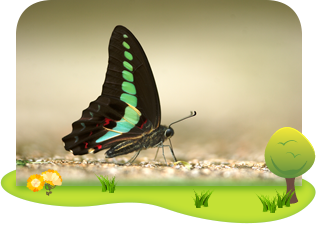
- To conserve local flora, fauna and natural habitats by offering professional advice on development proposals, planning strategies and environmental impact assessments;
- To draw up and implement biodiversity conservation plans, as well as to identify Sites of Special Scientific Interest (SSSI);
- To conduct regular ecological surveys, update inventories and manage an ecological database for Hong Kong;
- To control the release into the environment of genetically modified organisms, as well as their import and export;
- To monitor the ecology of the Mai Po Inner Deep Bay Ramsar Site and to develop and manage the Hong Kong Wetland Park;
- To protect endangered animal and plant species; and
- To promote public awareness of and participation in nature conservation through publicity and educational activities.
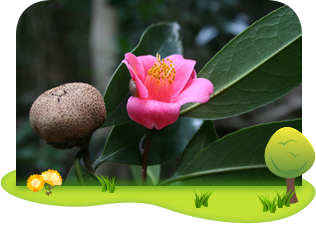
NATURAL ENVIRONMENT
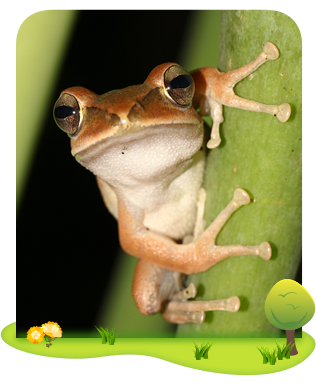
Hong Kong's topography and subtropical climate provide a wide range of habitats that support a rich variety of flora and fauna. Scenically, it has a great deal to offer – a landscape rising from sandy beaches and rocky foreshores to a height of almost 1,000 metres, with woodlands and hilly areas covered by open grassland, as well as a variety of scenic vistas rarely seen in such a small place.
In Hong Kong, there are more than 3,300 species of vascular plants, of which about 2,100 are native; 55 species of terrestrial mammals; 525 species of birds; 185 species of freshwater fish; 86 species of reptiles and 24 amphibian species. Insect diversity is also very high with some 240 species of butterflies and 117 species of dragonflies.
BIODIVERSITY STRATEGY AND ACTION PLAN
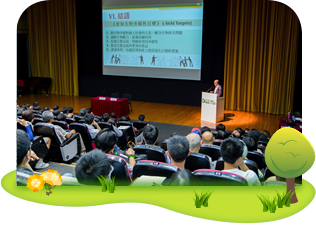 The Convention on Biological Diversity (CBD), an international treaty originated from the 1992 Earth Summit on Sustainable Development, was extended to Hong Kong in 2011. It aims to conserve biodiversity, utilise its components sustainably, and ensure fair and equitable sharing of the benefits arising out of the utilisation of genetic resources. It also emphasises the importance of biodiversity to human well-being.
The Convention on Biological Diversity (CBD), an international treaty originated from the 1992 Earth Summit on Sustainable Development, was extended to Hong Kong in 2011. It aims to conserve biodiversity, utilise its components sustainably, and ensure fair and equitable sharing of the benefits arising out of the utilisation of genetic resources. It also emphasises the importance of biodiversity to human well-being.
The CBD requires each Party to prepare a Biodiversity Strategy and Action Plan (BSAP) to make sure that the objectives of the Convention are undertaken at all levels and by all sectors. While Hong Kong is not a Party to the Convention per se, a city-level BSAP is now under formulation for Hong Kong to better conserve the local biodiversity, taking into account local needs and priorities.
A Steering Committee and three Working Groups, namely the Terrestrial Biodiversity Working Group, the Marine Biodiversity Working Group, and the Awareness, Mainstreaming and Sustainability Working Group, have been established for the formulation of the BSAP. Focus Groups have been formed under the Working Groups for in-depth discussions among experts, local representatives and government officials on priority issues. The BSAP will lay down existing condition of biodiversity and practices for its conservation in Hong Kong, and identify improvement work needed to be undertaken.
ENHANCED NATURE CONSERVATION
Under the New Nature Conservation Policy announced in November 2004, 12 priority sites have been identified for enhanced conservation through Public-Private Partnership (PPP) and Management Agreements (MA) with landowners. The Department is responsible for monitoring PPP and MA projects selected for implementation by the private sector or non-governmental organisations in these sites.
As at March 2014, there were 4 MA projects implemented at 4 priority sites. The 2 MA projects commenced in Long Valley and Fung Yuen since 2005 covered more than 16 hectares of private land. Two other MA projects at Ramsar Site and Deep Bay Wetland outside Ramsar Site covering over 330 and 400 hectares of fish ponds respectively commenced in February 2013 to sustain the efforts in promoting conservation management of fishponds in the Inner Deep Bay area. The increase in the number and diversity of birds in Long Valley and butterflies in Fung Yuen as well as the increased abundance of waterbirds at fishponds during drain-down suggested that the MA scheme was effective in enhancing the conservation value of the sites. In addition to the direct benefit to biodiversity, the projects also raised the conservation awareness of the public, local villagers and fish farmers.
ECOLOGICAL SURVEYS AND DATABASE
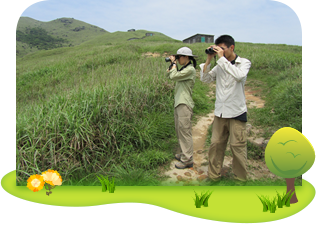 The Department has been conducting a territory-wide ecological survey programme since 2002 with a view to maintaining and updating an ecological database for the whole of Hong Kong. The survey programme covers all major habitats of high conservation value in Hong Kong, including the location, status and composition of feng shui woods, as well as the distribution and abundance of selected animal groups. As at March 2014, about 200,000 records of over 4,000 species of plants and animals had been collected, verified, and stored in the database.
The Department has been conducting a territory-wide ecological survey programme since 2002 with a view to maintaining and updating an ecological database for the whole of Hong Kong. The survey programme covers all major habitats of high conservation value in Hong Kong, including the location, status and composition of feng shui woods, as well as the distribution and abundance of selected animal groups. As at March 2014, about 200,000 records of over 4,000 species of plants and animals had been collected, verified, and stored in the database.
The survey findings confirmed that Hong Kong has a rich biodiversity, including species new to Hong Kong and even new to science. The findings further indicated that a very significant portion of this biodiversity has been well preserved in our protected areas. For the species groups surveyed and analysed, over 98% of the terrestrial and freshwater species that are regularly seen in Hong Kong have representative population(s) inside our protected areas.
During the year, the Department continued to boost public interest in local biodiversity and arouse public awareness of nature conservation through its online database on representative species and habitats at Hong Kong Biodiversity Online and the Hong Kong Live Eco-map. The Department also developed a central database using the Geographical Information System which incorporated survey data and ecological information available from other sources.
THE MAI PO INNER DEEP BAY RAMSAR SITE
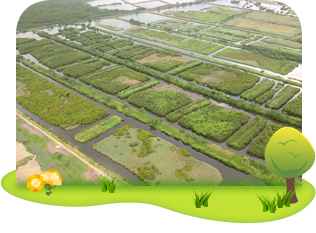
About 1,500 hectares of wetland in the Mai Po and Inner Deep Bay area was listed as a Ramsar Site in 1995. The Mai Po Inner Deep Bay Ramsar Site is located along the major migratory bird flyway “East Asian - Australasian Flyway” and is an important stopover site and habitat, supporting over 150 species of migratory and local waterbird species.
Since 2001, the Department has implemented a baseline ecological monitoring programme for the Ramsar Site. This long-term monitoring programme aims to collect ecological baseline information on the benthic communities and the condition of wetland habitats at the Ramsar Site.
Commissioned by the Department, the Hong Kong Bird Watching Society has been carrying out a monthly waterbird monitoring programme for the Deep Bay area since 1997. From October 2013 to March 2014, the peak winter count of waterbirds at the Ramsar Site was 51,313, including 9,552 ducks and grebes, 17,315 shorebirds, 9,216 gulls and terns, 8,761 cormorants, 2,728 egrets and herons, and 199 rails and coots.
BLACK-FACED SPOONBILLS
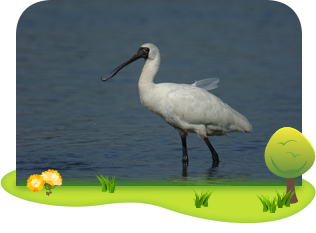 The Black-faced Spoonbill is a globally endangered species that can only be found in the East Asia region. In 2013-14 winter, the global population survey recorded 2,726 individuals. The highest count for wintering population in the Deep Bay area recorded in January 2014 was 252 individuals, i.e. about 9% of the global population made the Inner Deep Bay area their winter or stop-over migration site. The area has the fourth largest number of wintering Black-faced Spoonbills in the world.
The Black-faced Spoonbill is a globally endangered species that can only be found in the East Asia region. In 2013-14 winter, the global population survey recorded 2,726 individuals. The highest count for wintering population in the Deep Bay area recorded in January 2014 was 252 individuals, i.e. about 9% of the global population made the Inner Deep Bay area their winter or stop-over migration site. The area has the fourth largest number of wintering Black-faced Spoonbills in the world.
A conservation plan for Black-faced Spoonbills has been in place since 2001 which aims at maintaining the Mai Po Inner Deep Bay Ramsar Site in favourable conditions for the wintering Black-faced Spoonbills in Hong Kong. The plan also comprises measures for species and habitat protection and management, monitoring and research, education and training as well as regional cooperation.
SEA TURTLES
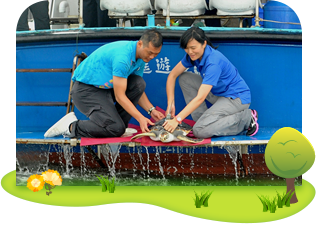
Green Turtle (Chelonia mydas) is the only sea turtle species that regularly nests in Hong Kong. Various conservation measures have been put in place, including the designation of Sham Wan beach on Lamma Island as a Restricted Area during the nesting period of Green Turtles from June to October each year, regular patrols and public education about sea turtle conservation in Hong Kong. During July to October 2013, the Department rescued 2 Green Turtles and 1 Hawksbill Turtle (Eretmochelys imbricata) which were in poor health conditions. After rehabilitation at the Ocean Park Hong Kong, they were released to the wild. With a view to understanding the movement of sea turtles and locating their foraging grounds in the South China Sea, satellite transmitters were deployed on the turtles. Satellite tracking revealed that these turtles, including Green Turtles and Hawksbill Turtles, arrived at their foraging grounds in Mirs Bay of Hong Kong East, the Wanshan Archipelagos, Shanwei, Gangkou and Nanao of Guangdong, Pratas (Dongsha) Islands, East Harbour of Fujian Province, the North of Philippines and Paracel (Xisha) Islands.
CONTROL OF TRADE IN ENDANGERED SPECIES
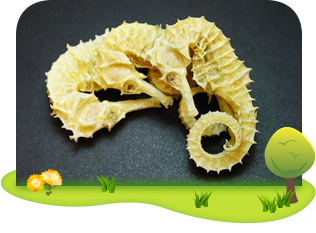
The Protection of Endangered Species of Animals and Plants Ordinance (Cap 586) is the local legislation which gives effect to the Convention on International Trade in Endangered Species of Wild Fauna and Flora (CITES). It strictly regulates the trade in endangered species.
During the year, enforcement actions in combating illegal trade in endangered species were vigorously taken, resulting in 671 seizures. A variety of endangered species was involved. The more commonly encountered specimens included live tortoises, turtles, snakes, orchid, ivory, reptile leather products, dried seahorse and pangolin carcass/scale.
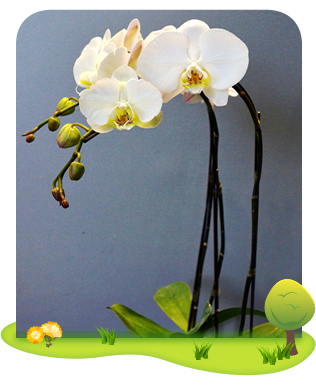 Continuous efforts were made by the Department in educating the general public, students and traders to raise their awareness of protection of endangered species and compliance with relevant legislation. Such efforts include operating the Endangered Species Resource Centre, conducting talks in schools, holding roving exhibitions at public venues, distributing advisory leaflets as well as mounting displays at the airport and border control points.
Continuous efforts were made by the Department in educating the general public, students and traders to raise their awareness of protection of endangered species and compliance with relevant legislation. Such efforts include operating the Endangered Species Resource Centre, conducting talks in schools, holding roving exhibitions at public venues, distributing advisory leaflets as well as mounting displays at the airport and border control points.
The 16th Meeting of the Conference of the Parties (CoP16) to CITES was held in Bangkok, Thailand in March 2013. The species listed in the CITES Appendices and certain provisions on CITES implementation were amended at the meeting. The changes include new listing of some species of shark, tortoise and turtles, and timber. Before the meeting, circular letters were issued to traders informing them the proposals for amendment of CITES Appendices and several briefing sessions were organised to brief relevant traders on the proposals. The Ordinance is being amended to give effect to the CITES changes in Hong Kong.
Statistics on the control of trade in endangered species are at Appendix 12.
CONTROL OF GENETICALLY MODIFIED ORGANISMS
The Genetically Modified Organisms (Control of Release) Ordinance (the Ordinance) (Cap 607) is the local legislation which gives effect to the Cartagena Protocol on Biosafety to the Convention on Biological Diversity. The Ordinance controls the release into the environment, and the import and export, of genetically modified organisms (GMOs). Under the Ordinance, prior approval has to be sought from the Director of Agriculture, Fisheries and Conservation before a genetically modified organism (GMO) could be released or imported into Hong Kong for release into the local environment. In addition, shipments containing GMOs, when being imported or exported, have to be accompanied with prescribed documents to enable easy identification of the GMOs and to provide the contact points for further information.
The Department launched a number of educational and publicity activities to enhance public awareness and understanding of the Ordinance, which included distributing pamphlets to the general public, broadcasting videos at the airport, organising roving exhibitions and updating the online GMOs Register.
THE HONG KONG WETLAND PARK
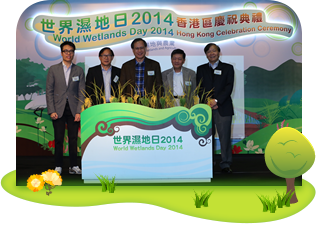 Opened in May 2006, the Hong Kong Wetland Park is a landmark in wetland conservation, with a mission to promote eco-tourism in Hong Kong and foster public awareness of the values of wetlands. The Park combines the natural beauty of 60 hectares of wetland reserve with a visitor centre of over 10,000 square metres showcasing sophisticated exhibits on wetlands. During the year, the Park attracted about 440,000 visitors.
Opened in May 2006, the Hong Kong Wetland Park is a landmark in wetland conservation, with a mission to promote eco-tourism in Hong Kong and foster public awareness of the values of wetlands. The Park combines the natural beauty of 60 hectares of wetland reserve with a visitor centre of over 10,000 square metres showcasing sophisticated exhibits on wetlands. During the year, the Park attracted about 440,000 visitors.
The Department is responsible for the management of the Park, with respect to daily operation, education and community services, exhibit maintenance, habitat management and marketing promotion.
In 2013-14, the Park organised a wide range of activities for some 170,000 visitors of all ages including guided tours, seminars, wildlife watching classes, contests, dramas, art workshops and thematic events.
The Park offered guided visit programmes to students from kindergartens to senior secondary schools. In 2013-14, the Park conducted over 840 guided tours for more than 19,200 students. In addition, the Park organised exhibitions, talks, teacher's workshops and partnership programmes to support wetland education in schools. Sixteen teacher’s workshops were organised in the year to enhance teachers’ knowledge in conducting education activities at the Park.
For the general public, the Park organised 12 public lectures for over 1,100 visitors during the year. Various thematic events were organised to tie in with public holidays and major festivals, such as Bird Watching Festival, The Flying Beauties, Horseshoe Crab Fortnight and World Wetlands Day Celebrations.
The Park continued to work with different sectors to promote the awareness of wetland conservation throughout the community. The Hong Kong Wetland Park Volunteer Scheme recruited about 1,240 volunteers in 2013-14. They assisted in the operation of the visitor centre and habitat management, and offered guided tours for visitors. The Park also established partnership programmes with corporations and non-governmental organisations to draw expertise and resources into the force of wetland conservation.
The Park plays an important role in promoting wetland conservation and education in the Asia Pacific region. Being an active player of the Wetland Link International – Asia (WLI-Asia) network, the Park shared the best practices and experience in wetland education with wetland centres in the region.
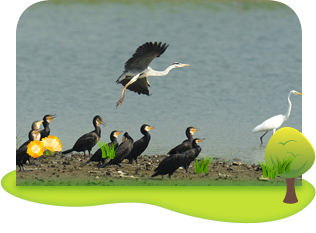 Since 2003, the Department has been conducting habitat management at the Wetland Reserve with a view to enhancing its ecological functions. The wetland habitats in the Wetland Reserve support Black-faced Spoonbill and many other waterbird species. The cumulative number of bird species recorded at the Reserve has reached 247. Waterbirds or birds dependent on wetlands make up approximately 45% of all species recorded. In addition to birds, ecological surveys conducted at the Reserve have recorded a variety of other species especially the wetland indicators – dragonflies, amphibians and reptiles. The cumulative numbers of dragonfly, amphibian and reptile species recorded at the Reserve are 52, 10 and 29 respectively. This shows that, with proper site design and management, the objectives of nature conservation, education and tourism can co-exist.
Since 2003, the Department has been conducting habitat management at the Wetland Reserve with a view to enhancing its ecological functions. The wetland habitats in the Wetland Reserve support Black-faced Spoonbill and many other waterbird species. The cumulative number of bird species recorded at the Reserve has reached 247. Waterbirds or birds dependent on wetlands make up approximately 45% of all species recorded. In addition to birds, ecological surveys conducted at the Reserve have recorded a variety of other species especially the wetland indicators – dragonflies, amphibians and reptiles. The cumulative numbers of dragonfly, amphibian and reptile species recorded at the Reserve are 52, 10 and 29 respectively. This shows that, with proper site design and management, the objectives of nature conservation, education and tourism can co-exist.
HONG KONG HERBARIUM AND FLORA CONSERVATION
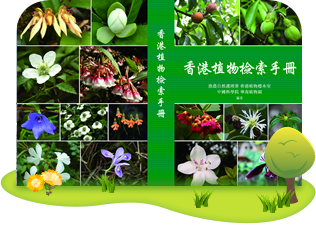 The Department manages the Hong Kong Herbarium which is responsible for the systematic collection, identification and maintenance of plant specimens of Hong Kong's flora. During the year, the specimen collection of the Herbarium exceeded 43,200, more than 290 of which are type specimens, making the Herbarium regionally important.
The Department manages the Hong Kong Herbarium which is responsible for the systematic collection, identification and maintenance of plant specimens of Hong Kong's flora. During the year, the specimen collection of the Herbarium exceeded 43,200, more than 290 of which are type specimens, making the Herbarium regionally important.
The Hong Kong Herbarium collaborated with the South China Botanical Garden in compiling the Flora of Hong Kong and Handbook of Hong Plants. The Flora of Hong Kong is a definitive technical reference aiming at recording all known plant species in Hong Kong, and is the first book about flora of South China written in English and fully illustrated with botanical drawings and colour photographs. Volumes 1 to 4 and Master Index of the Flora of Hong Kong were published in 2007 - 2012. The Handbook of Hong Kong Plants, compiled on the basis of the Flora of Hong Kong, was published in 2013. With dichotomous keys compiled according to stable, reliable and remarkable morphological features and characteristics of plants, this handbook provides a useful reference in plant identification for plant workers as well as amateurs. Over 2,000 colour photographs and some illustrations of botanical terms were provided to help readers use the dichotomous keys.
The Herbarium is functioning as a resource centre for plant workers for its collection of specimens, associated field notes and botanical literature offering good reference materials to botanists who wish to study about the local flora. In addition, the Herbarium aims to promote public awareness of local flora through organising guided visits, publishing educational materials and managing the “Hong Kong Plant Database” which provides basic information of more than 3,300 local plant species and over 6,000 photos via the revamped website of the Hong Kong Herbarium.
SITES OF SPECIAL SCIENTIFIC INTEREST
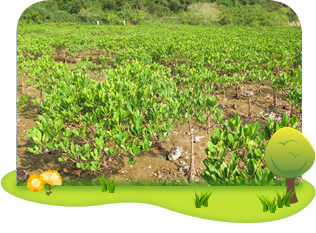 Sites of Special Scientific Interest (SSSI) may be land-based or aquatic sites, which are of special scientific interest because of their flora, fauna, geographical or geological features. During the year, the Department continued to patrol and monitor the conditions and scientific values of all SSSIs. Where warranted, the Department also carried out appropriate habitat management work at some SSSIs to maintain or enhance their scientific value. For instance, Mikania control was conducted at A Chau SSSI and Mai Po Village SSSI to improve the conditions of the trees there so as to provide a suitable site for egrets and herons to nest. Butterfly host plants were planted at Fung Yuen Valley SSSI to enhance the butterfly habitat. The Department also continued to review the status of SSSIs and identify new sites suitable for SSSI listing or make proposals for de-listing those sites no longer deserving the SSSI status due to changes in circumstances over time after their listing. Up to 2013-14, there are 67 sites listed in the SSSI register.
Sites of Special Scientific Interest (SSSI) may be land-based or aquatic sites, which are of special scientific interest because of their flora, fauna, geographical or geological features. During the year, the Department continued to patrol and monitor the conditions and scientific values of all SSSIs. Where warranted, the Department also carried out appropriate habitat management work at some SSSIs to maintain or enhance their scientific value. For instance, Mikania control was conducted at A Chau SSSI and Mai Po Village SSSI to improve the conditions of the trees there so as to provide a suitable site for egrets and herons to nest. Butterfly host plants were planted at Fung Yuen Valley SSSI to enhance the butterfly habitat. The Department also continued to review the status of SSSIs and identify new sites suitable for SSSI listing or make proposals for de-listing those sites no longer deserving the SSSI status due to changes in circumstances over time after their listing. Up to 2013-14, there are 67 sites listed in the SSSI register.
CONTROL OF WILD MONKEYS
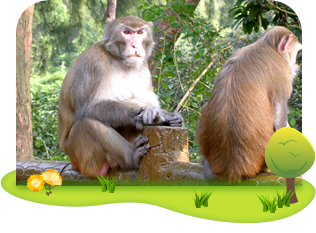 The wild monkey population in Hong Kong had increased in the past years and has caused public concern. To control the population increase in the long term, the Department has stepped up the field trial of contraceptive treatment. In 2013-14, the Department carried out such treatment on 164 monkeys. The Department also strengthened the enforcement of feeding ban in specific country parks to minimise monkey nuisance to visitors. During the year, a total of 152 country park visitors were prosecuted for unauthorised feeding of wild monkeys. With the implementation of both the feeding ban and the contraceptive programme, it is observed that there is a decreasing trend in the population of wild monkeys as well as the number of wild monkey nuisance cases.
The wild monkey population in Hong Kong had increased in the past years and has caused public concern. To control the population increase in the long term, the Department has stepped up the field trial of contraceptive treatment. In 2013-14, the Department carried out such treatment on 164 monkeys. The Department also strengthened the enforcement of feeding ban in specific country parks to minimise monkey nuisance to visitors. During the year, a total of 152 country park visitors were prosecuted for unauthorised feeding of wild monkeys. With the implementation of both the feeding ban and the contraceptive programme, it is observed that there is a decreasing trend in the population of wild monkeys as well as the number of wild monkey nuisance cases.

